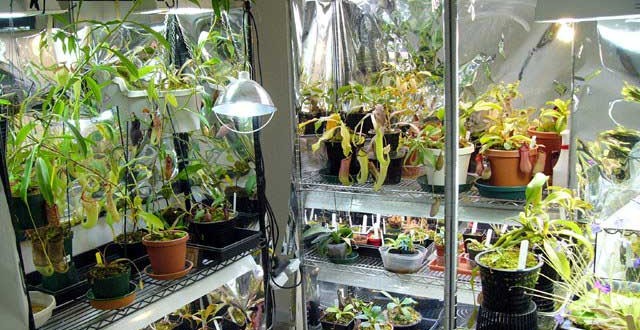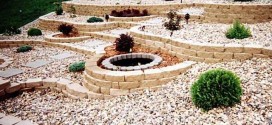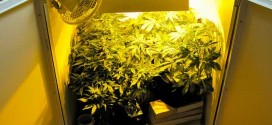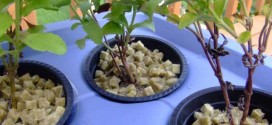A growroom (or grow room) is a room of any size where plants are grown under controlled conditions. The reasons for utilizing a growroom are countless. Some seek to avoid the criminal repercussions of growing illicit cultivars, while others simply have no alternative to indoor growing. Plants can be grown with the use of artificial light, sunlight, or a combination of the two.
Due to the heat generated by high power lamps, grow rooms will often become excessively hot relative to the temperature range ideal for plant growth, often necessitating the use of a supplemental ventilation fan.
Growing methods
The plants in a growroom can be grown in soil, or without soil via means such as hydroponics, and aeroponics. Not only is growing in a soiless medium more cost effective, sometimes one also gets a much higher yield, as well as faster fruit maturation.
Soiless mixes usually carry 0% nutrients so the gardener can utilize the perfect combination of nutrients for the crop. Vermiculite, perlite, coconut husk and rockwool are the most popular mixes for indoor cultivation.
Lighting
The three most common varieties of lighting for indoor growing are high-intensity discharge lamps (the most prevalent for this application being: sodium-vapor lamps for flowering and metal halide lamps for growing), compact fluorescent lamps, and traditional fluorescent lamps. Full spectrum indoor LED grow lights are becoming more common in grow rooms due to their low energy requirements and very low heat output. LED grow lights use very low power and are designed to optimize photosynthesis, as opposed to fluorescent lights which only provide a portion of the desirable spectrum or incandescent and gas-discharge bulbs which also produce only a portion of the optimal wavelengths and, in addition, waste significant energy in the form of heat.
Luminous efficacy
High Intensity discharge lamps (HID) have the most efficacy in terms of Lumen (unit)s of light output vs. power input. Compact fluorescent are slightly less efficient than HID lamps.
Traditional fluorescent lamps generally do not produce enough concentrated light to be a primary light source for most indoor growing operations. Fluorescent and compact fluorescent lamps are excellent light sources for young plants (seedlings). They are also excellent for supplementing the light generated by primary HID lamps. Light is essentially “plant food”; everything else that we provide to a plant serves the purpose of helping it digest and use the light. As the plant grows larger, it requires an increasing amount of light. There is no substitute for light: if the amount of light received by the plant is insufficient, the plant will stretch, and / or growth will slow to a halt For indoor gardening one of the most important topics is therefore the amount of light energy striking the surface of the plant (“incident light”), which can be measured in lux (lux = lumens / area illuminated in square metres).
Ventilation
As a controlled environment, grow rooms offer many advantages over outdoor alternatives. However, without adequate ventilation, the plants may consume resources, like oxygen and carbon dioxide, faster than they can be replenished. Adequate gas exchange is necessary for optimal plant growth. Ventilation is also an important method for maintaining an optimal temperature for plant growth. Advanced grow room even include air conditioning to keep running temperatures down, as well as CO2 to boost the plant’s growth rate.
Clandestine usage
Cultivating marijuana is illegal in many countries, and thus some choose to grow marijuana indoors in an attempt to conceal their activities.
Law enforcement authorities attempting to locate grow rooms are known to search the records of electricity providers for signs of excessive electrical consumption and employ airborne thermal imaging cameras/FLIR/infrared cameras). Growers respond to the use of thermal imaging cameras by isolating and decoupling rooms physically from the outer walls of buildings, and directing ventilation exhaust into a chimney.
 Karshika Keralam – A site for Agricultural Enthusiasts
Karshika Keralam – A site for Agricultural Enthusiasts




